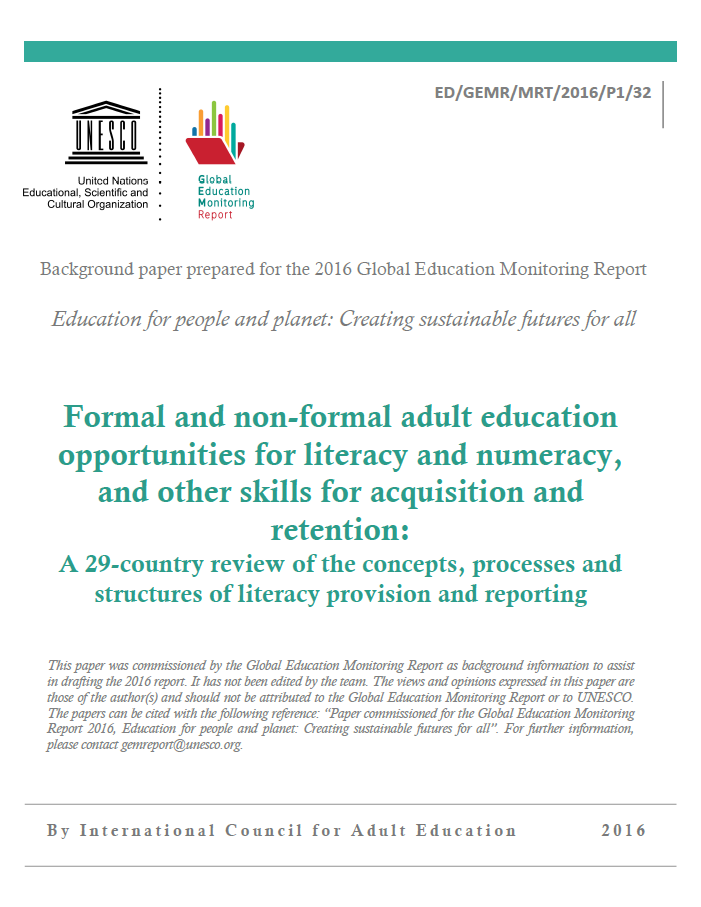Formal and non-formal adult education opportunities for literacy and numeracy, and other skills for acquisition and retention : A 29-country review of the concepts, processes and structures of literacy provision and reporting
Abstract
The Sustainable Development Goals (SDGs) articulate a universal, holistic and ambitious global development agenda, setting out 17 goals, and 169 related targets. Among the SDGs there is a goal on Education and Lifelong Learning, which, through target 4.6, calls on countries to “ensure that all youth and a substantial proportion of adults, both men and women, achieve literacy and numeracy”. Securing literacy and numeracy depends largely on the principles, strategies and actions underpinned by a contemporary understanding of literacy not as a simple dichotomy of ‘literate’ versus ‘illiterate,’ but as a continuum of proficiency levels. In addition, it depends on organized and systemic adult learning and education opportunities at local level, and a sensitivity to the environmental or contextual factors that adults encounter in their lifelong learning paths. By critically reviewing existing formal and non-formal adult education opportunities in literacy, numeracy and other skills for acquisition and retention, the Global Education Monitoring Report and the International Council for Adult Education seek to explore the possible ways to construct a global monitoring and follow-up framework for the SDGs’ target 4.6. This work was done by analyzing experts’ submissions from 29 countries from around the world, and reviewing existing literature on literacy and
numeracy and international surveys. This review reveals the complexity and multifaceted nature of adult education and literacy. The main challenges that need to be addressed to develop a global monitoring and follow-up framework for literacy include: overcoming conceptual confusions around adult education and adult literacy at national and international level; the reformulation of existing literacy targets to make them measurable and properly financed; additional baseline data and research evidence at local level is still needed, and; more coherence and coordination among national and international monitoring frameworks for global comparability.


